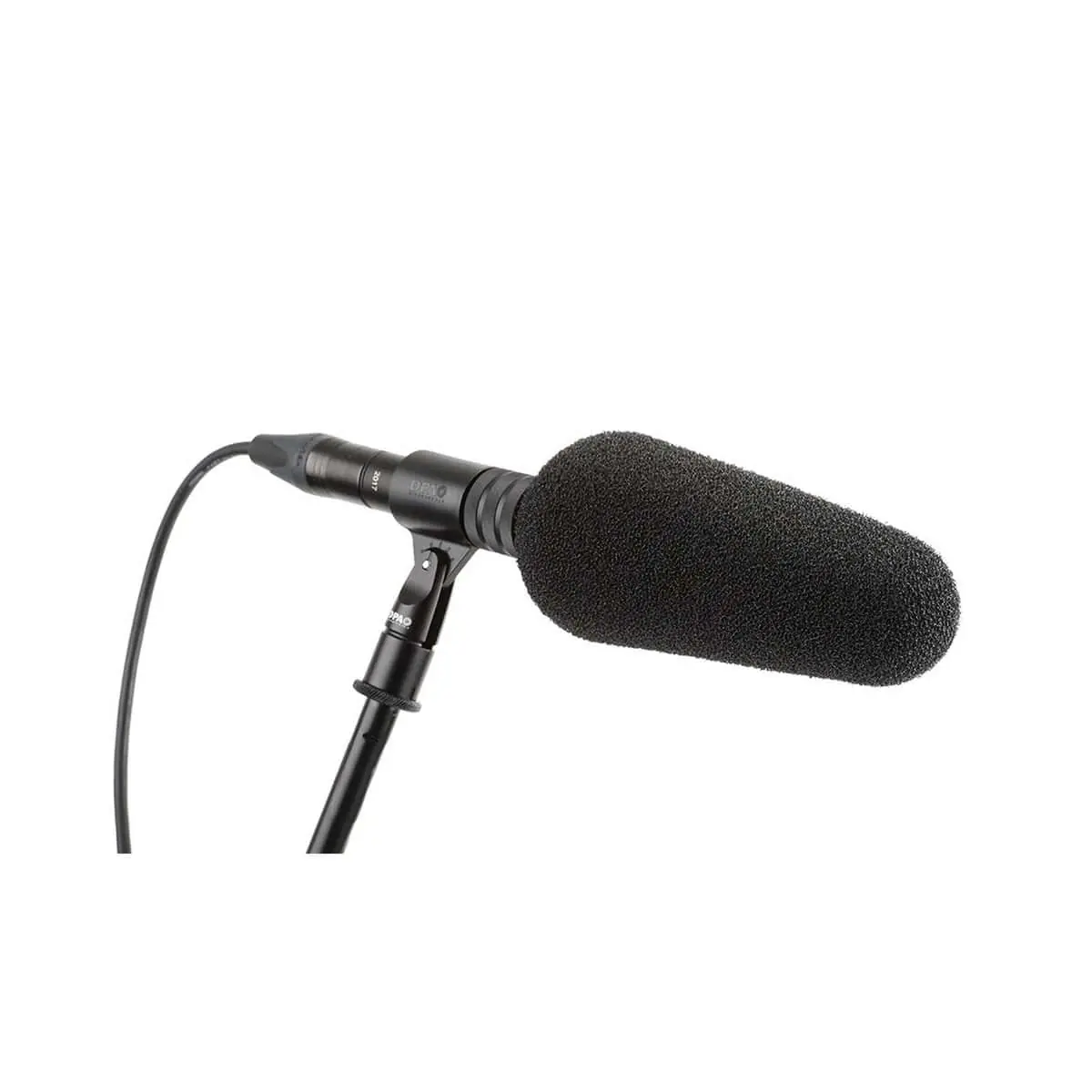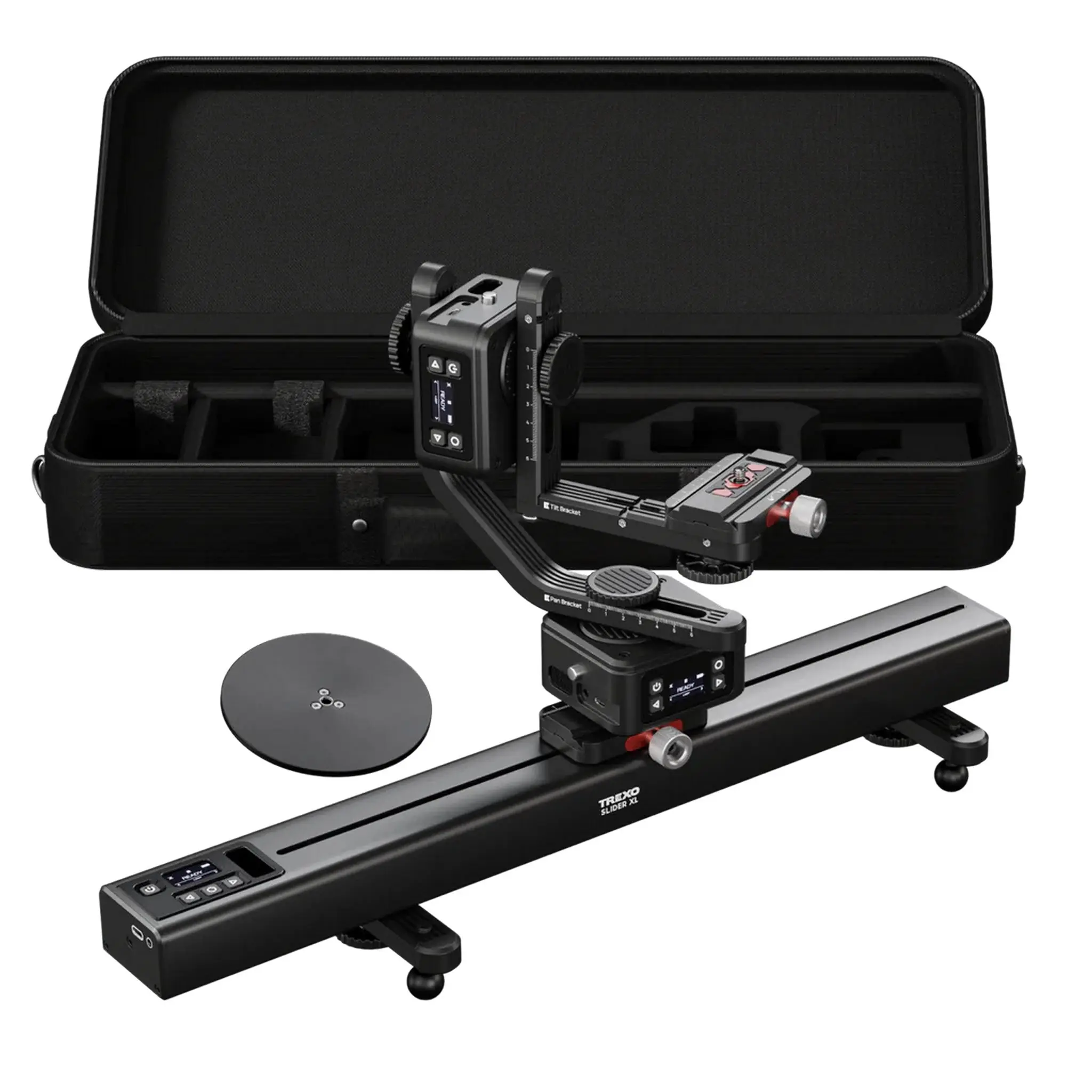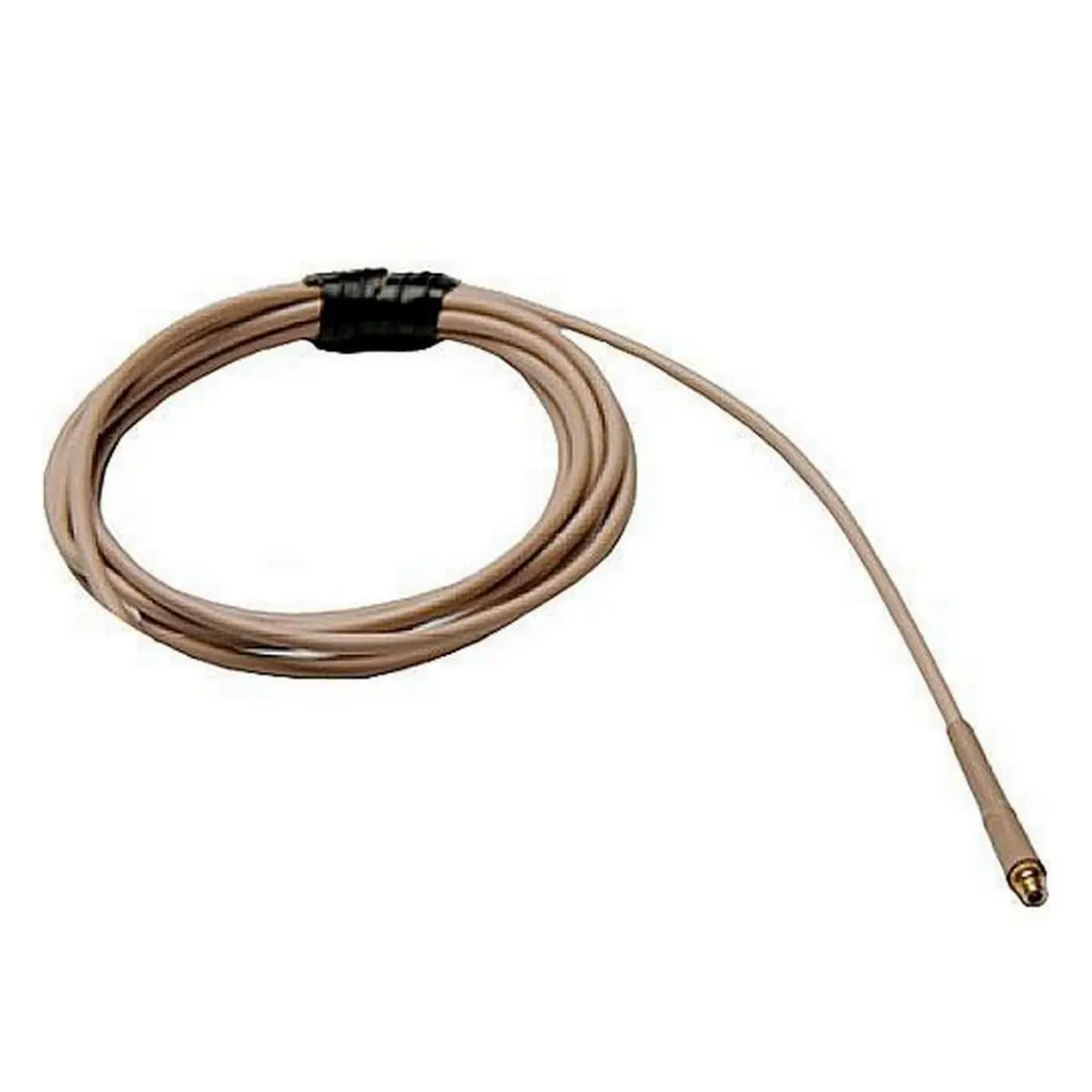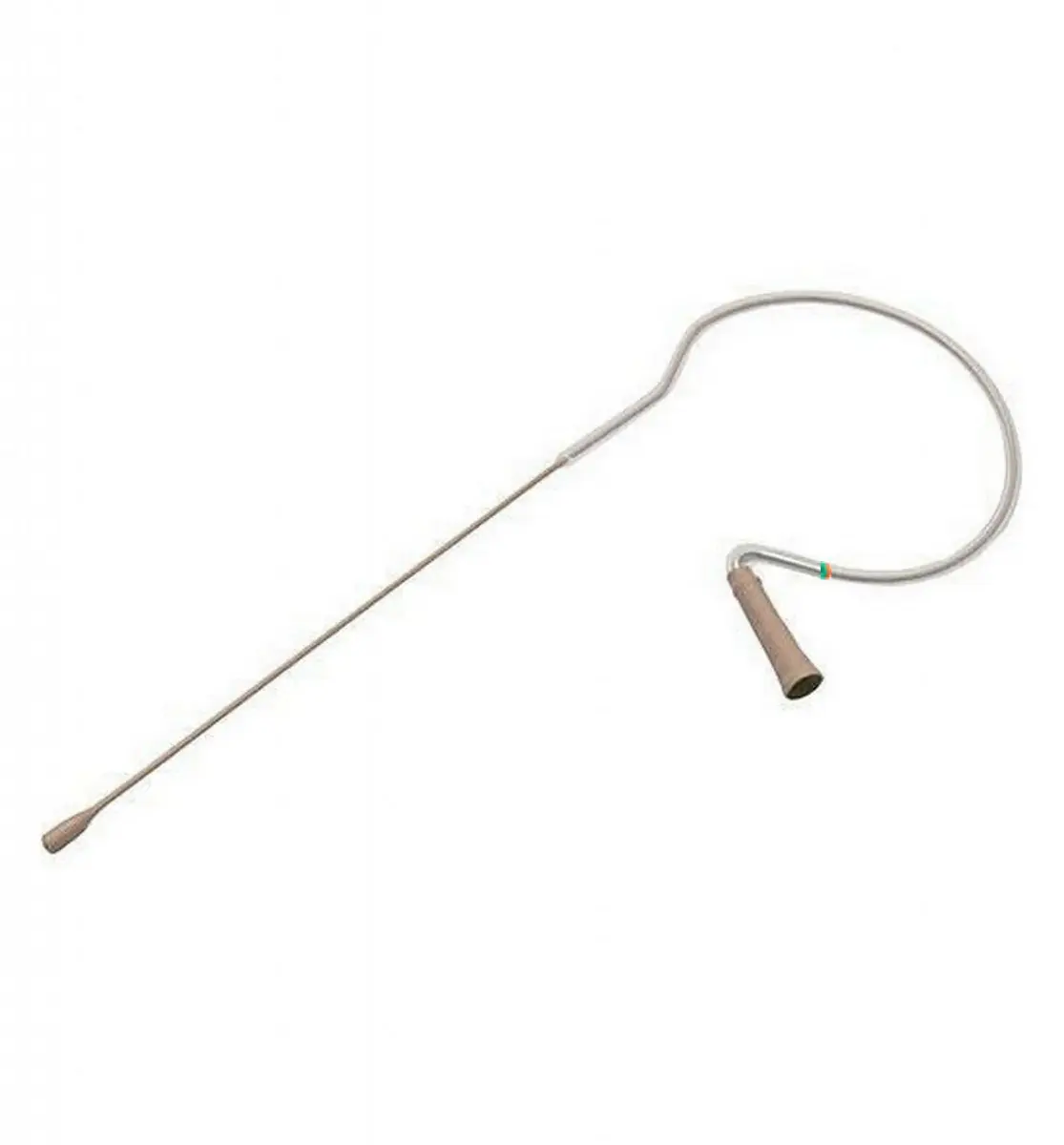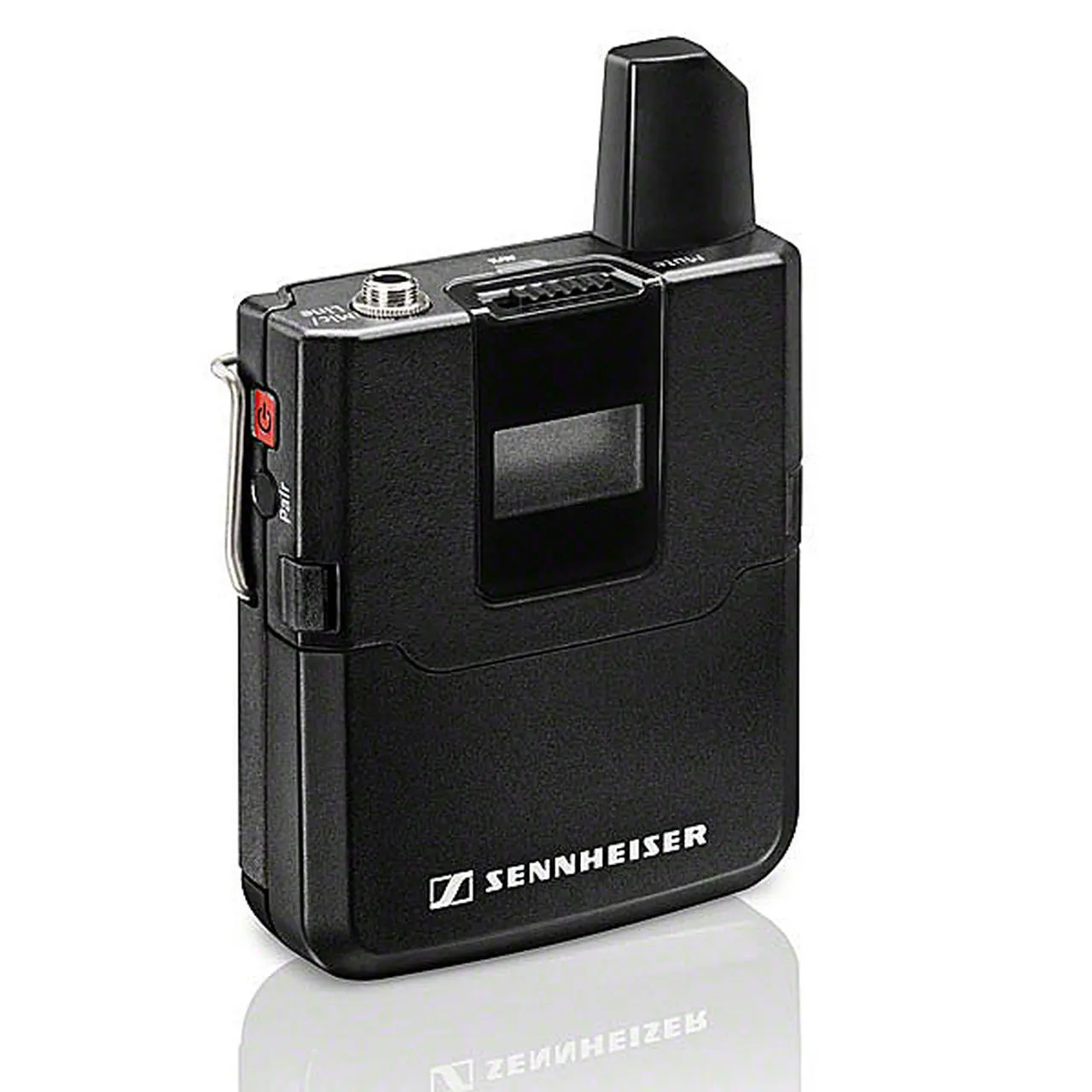DPA 2017 Supercardioid Condenser Shotgun Microphone
The 2017 Shotgun Microphone is an extremely directional mic that combines crystal clear, authentic sound and stable, consistent performance under harsh conditions.
Its acoustical performance sets it apart from any competition. It has efficient off-axis rejection combined with an off-axis frequency response that is much more linear than most similar shotgun mics on the market. These are exactly the capabilities that result in authentic sound.
In addition, the 2017 performs consistently in a variety of conditions, like cold weather and humid environments as well as in generally harsh situations.
Finally, although the interference tube surrounding the capsule is quite long, the entire mic is contained in a shorter, lighter mic housing than many other mics that it outperforms. This makes the 2017 a practical choice in a wide range of applications.
Accurate, natural sound
2017 is designed to ensure that the sound from the primary sound source combines effortlessly with natural sound captured off-axis. The sound is clear and lifelike, including the heavily-attenuated off-axis input. It exhibits the same non-coloration of the off-axis response, i.e., it sounds like what is coming in on-axis, just damped accordingly with the side and rear entries.
Many other shotgun mics don’t pick up off-axis sound naturally, making, for example, the crowd noise sound more like a waterfall or even completely unrecognizable.
Outstanding off-axis rejection
2017, like all DPA’s directional mics, has outstanding performance off-axis. Due to the expertly designed interference tube technology, all off-axis input is highly attenuated.
This means that the 2017 offers comparable directionality as comparable mics on the market, but due to the well-crafted design, the off-axis pickup is much more balanced as well as uniform. This gives the user a well-balanced compromise between natural off-axis sound and maximal off-axis rejection.
Extraordinary durability
The 2017 is constructed to withstand rough handling as well as difficult situations, such as cold climates and humidity.
We have designed the encapsulating structure without moving mechanical parts and have found just the right thickness of material and ideal uniform pattern of slits on the grid. These things combined make the microphone extremely resistant to mechanical impact. In addition, the materials used inthe capsule design and electronics ensure the mic is resistant to moisture, temperature and condensation issues.
The 2017 has a thick, robust body construction of brass that is exceptionally durable and known for its corrosion resistance and tolerance against metal fatigue. In addition, the surfaces of the mic are treated with a protective black chrome finish, which ensures more graceful ageing.
Extremely directional pick-up pattern
The 2017 is an extremely directional shotgun microphone. It shows impressive attenuation at 90° (around -10 dB) and maximal rejection around 125° (more than -20 dB). Its polar pattern provides a more even pickup of “on-scene” (0°) sound sources than many widely-used shotgun microphones and a larger rejection of out-of-scene noises, thereby achieving a better overall performance than many competing mics on the market.
Easy to set up, position and use
2017 is shorter, lighter and easier to use than competitive mics. Its smaller dimensions allow it to fit in smaller wind protection units and, since there are no buttons to push on it, you can place it in its protection unit and forget about it.
In addition, the carefully-designed interference tube, combined with the uniform 360° grid, ensures consistent results even if the actual microphone gets rotated around the central axis. Other shotguns, with a less uniform grid pattern, suffer from shifts in sound color, if the mic is unintentionally rotated.
Low self-noise
With an extreme SPL (Sound Pressure Level) handling of 143 dB SPL Peak, low self-noise of 13 dB(A) and a 130 dB dynamic range, the 2017 excels where other good shotgun microphones fail, making it useful in applications where shotguns traditionally do not perform well.
Low self-noise is useful when you need to capture/amplify quiet sources or when many microphones are open at the same time.
Thoroughly tested to excel in the harshest situations
2017 has lived up to our testing protocols that evaluate its physical robustness specifically regarding mechanical impact and humidity and condensation resistance.
Several tests have been conducted to confirm that the microphone’s functionality is not affected by repeated rolling off shelves or tilting over on a mic stand onto a hardwood floor right onto the tip of the microphone.
In addition, the microphone survives exposure to direct rain showers, and dries up quickly to return to perfect operation faster than many other shotguns on the market.
Testing has shown that the 2017 can consistently and easily withstand and recover from condensation phenomenon, on par with the most stable shotgun mics on the market.
Design choices by R&D
Every decision was made by optimizing theoretical algorithms and performing extensive design modelling. This scientific approach allowed us to understand and break apart the dependencies between approximately 100 parameters, each of which influences mic performance. In this way, we could identify and overcome challenges and, in the end, design the shotgun mic that we envisioned, without compromising on clarity, consistency or durability.
Key Features
- Accurate, clean sound from the primary sound source combines effortlessly with natural sound captured off-axis
- Extraordinary durability, with reinforced construction to perform in challenging environments, including high humidity
- Outstanding off-axis rejection for optimal isolation of the desired sound source
- Extremely directional pick-up pattern, with an effective interference tube in a compact housing
- Easy to set up, position and use in fixed positions, on booms and on camera systems
- Low self-noise, for excellent performance in quiet environments or with many open microphones
Technical Specifications
Directional pattern
Supercardioid at 1 kHz
Principle of operation
Pressure gradient
Cartridge type
Pre-polarized condenser
Frequency response
20 Hz – 20 kHz
Effective frequency range, ±2 dB, at 60 cm (23.6 in)
70 Hz to 18 kHz with typ. 2 dB soft boost at 15 kHz
Sensitivity, nominal, ±2 dB at 1 kHz
25 mV/Pa (± 2 dB )
Equivalent noise level, A-weighted
Typ. 13 dB(A) re. 20 µPa (max. 15 dB(A))
Distortion, THD < 1%
140 dB SPL (143 dB SPL peak)
Dynamic range
Typ. 130 dB
Max. SPL, THD 10%
145 dB SPL (148 dB SPL peak)
Rated output impedance
60 Ω
Minimum load impedance
2 kΩ
Cable drive capability
100 m (328 ft)
Output balance principle
Impedance balancing with Active Drive
Common mode rejection ratio (CMRR)
> 60 dB
Power supply (for full performance)
P48 (Phantom Power)
Current consumption
1.8 mA
Connector
XLR-3M. Pin 1: shield, Pin 2: signal + phase, Pin 3: – phase
Color
Black
Weight
115 g
Microphone diameter
19 mm (0.75 in)
Capsule diameter
17 mm (0.67 in)
Microphone length
184 mm (7.2 in)
Maximum output voltage, RMS
8.7 V (21 dBu)
Polarity
+V at pin 2 for positive sound pressure
Temperature range
-40°C to 45°C
Relative humidity (RH)
Up to 90 %
Capsule capacitance
315 g



